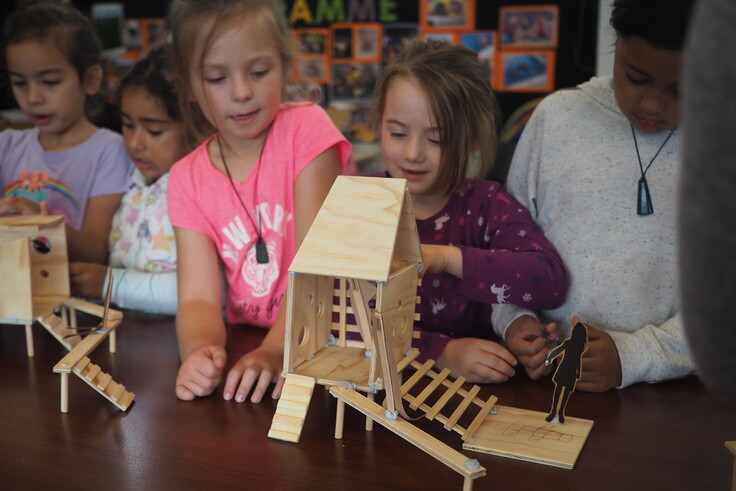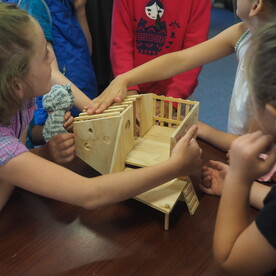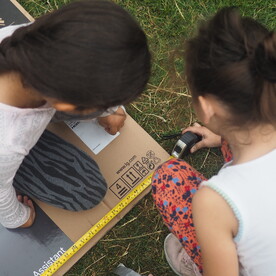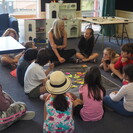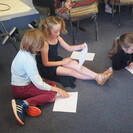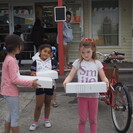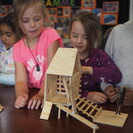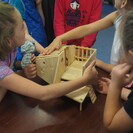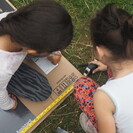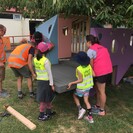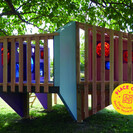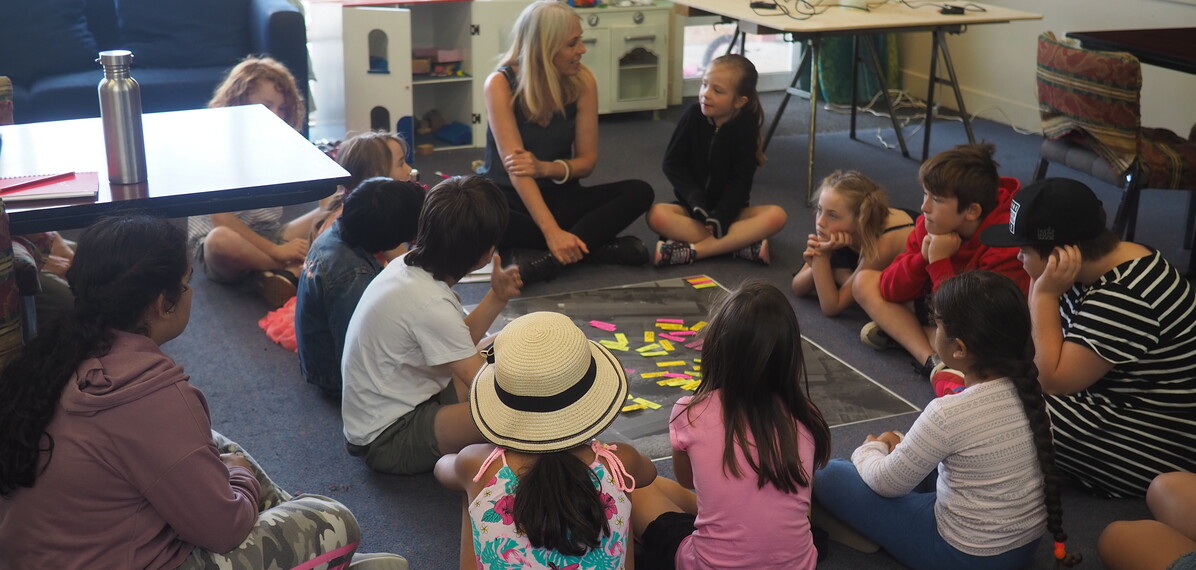
Showcase
- NZILA Category Joint Winner He Iti Pounamu — 2022
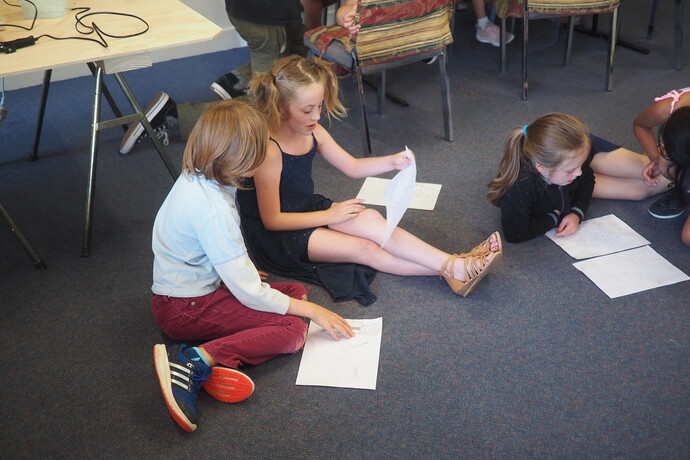
Place Cadets at Phillipstown Hub was an exploratory participatory design project, demonstrating the value of involving children as active researchers and designers in their neighbourhood spaces. The project also revealed how children can be catalysts for wider community participation. It was a collaboration between the Phillipstown Community Centre Charitable Trust (Phillipstown Hub) and a design team led by Landscape Architect Wendy Hoddinott of Gather Landscape Architecture.
Over the course of two weeks, twenty-one children aged five to eleven were led on a design thinking process to create a modular, site-specific play element for their outdoor area. This included a series of playful activities and creating a brief. Children worked in groups to imagine numerous design responses through sketches, models and prototypes at different scales. The result, a life-size modular play structure was assembled by the children with their caregivers and whānau, before a celebratory lunch with the wider community.
The project has modelled a tangible and innovative way that children can participate in spatial design while strengthening children’s sense of place, belonging and kaitiakitanga in the community. The design process carried out with the children was innovative, unique and in dialogue with its local context, highlighting how small, exploratory projects can have relevance for meaningful engagement and long term planning.
The project addresses not only the physical outcome, but importantly the social processes of its development. Named the Imaginarium, the structure is constantly used, with the Hub manager reporting that at times it is more popular than the local playground.
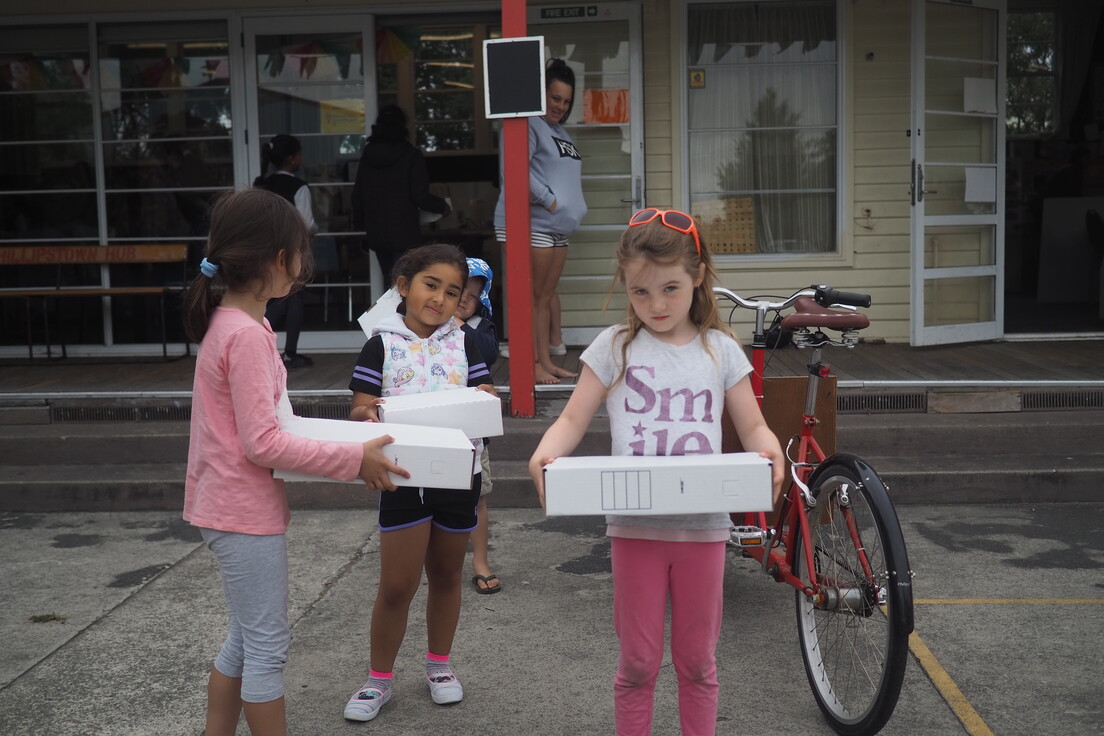
Judges’ citation:
This project demonstrates how tamariki and rangatahi can participate in design as researchers and creators of their spaces. Twenty-one children aged five to eleven took part in this two week school holiday programme to design and build a site specific modular play structure for their outdoor area: the Imaginarium.
The project was a collaboration between the Phillipstown Community Centre Charitable Trust (Phillipstown Hub) and a design team led by Landscape Architect Wendy Hoddinott of Gather Landscape Architecture.The process was the landscape architecture focus and has demonstrated successful engagement with the young participants. Iteration development is an area which has been identified for further learning for the landscape architecture team.
The judges applauded the approach which saw tamariki able to witness their ideas become a reality and gaining a real sense of belonging and inspiration in the process. Design education starts young as this project demonstrates so successfully.
Client:
Viviana Zanetti, Phillipstown Community Centre Charitable Trust
Company:
Gather Landscape Architecture
External collaborators:
Prior to the starting date of the project, I discussed the opportunity with Viviana Zanetti, the Manager at Phillipstown Hub and Jonathan Hall at Variant Ltd.
Key contractors:
Jonny Hall - Design & Build
Rhiannon Josland - Human Centred Design & Graphic Design
Jono Kitt - Community Development Worker
